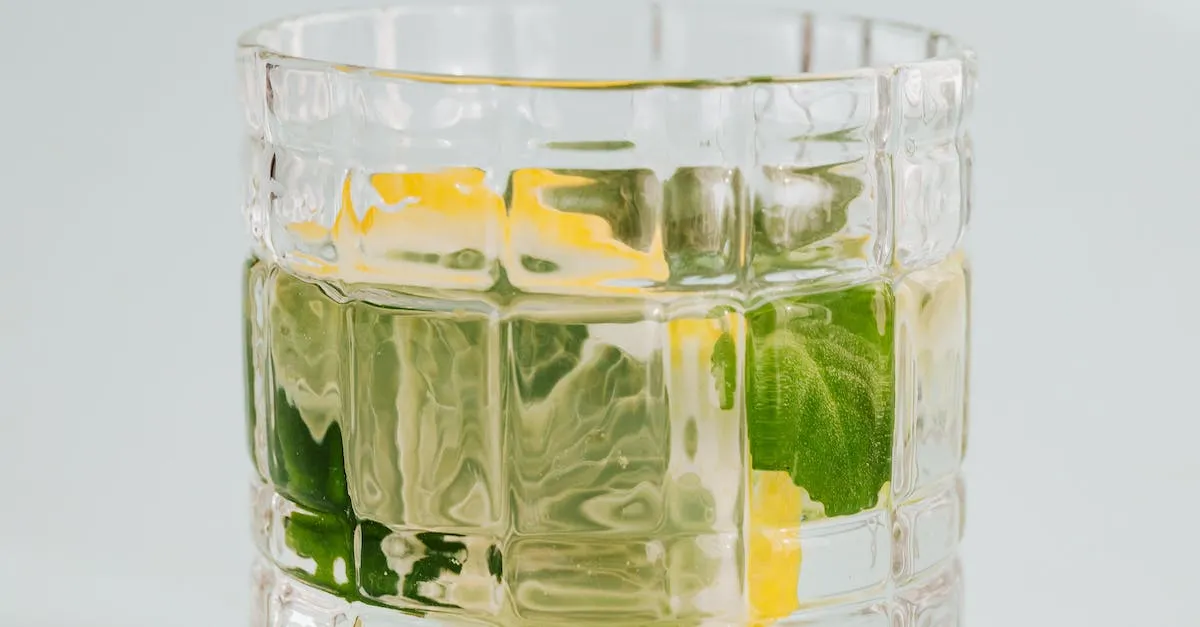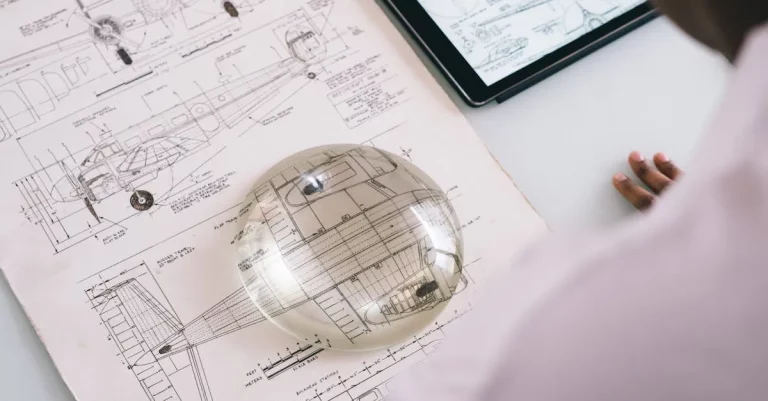Why Does Florida Water Taste Bad? Examining The Causes
Florida is known for many things – beaches, theme parks, and year-round warm weather. But when it comes to the taste of its tap water, the Sunshine State has a bad reputation. If you’re wondering why Florida water can have an unpleasant taste, the reasons mainly come down to the local geology and water treatment methods.
In this comprehensive guide, we’ll examine the underlying factors that can make Florida’s tap water taste bad. We’ll look at the high mineral content of the groundwater, algae blooms, chlorine disinfection, and old pipe infrastructure. We’ll also provide tips for improving water taste and discuss how some cities are trying to enhance water quality.
High Mineral Content in Groundwater
One of the main reasons why Florida water often tastes bad is due to the high mineral content in the groundwater. Florida has a unique geological makeup with limestone formations, which can lead to the presence of minerals such as calcium, magnesium, and sulfur in the water supply.
These minerals can give the water a distinct taste that some people find unpleasant.
The high mineral content in Florida’s groundwater is a result of the state’s porous limestone bedrock, which allows water to easily flow through it and pick up minerals along the way. As the water travels through the limestone, it can dissolve and carry minerals into the groundwater sources, including aquifers and wells.
One mineral commonly found in Florida water is sulfur, which can give the water a rotten egg smell and taste. Sulfur is naturally occurring and can be present in both well water and municipal water supplies.
While sulfur in small amounts is not harmful to health, it can make the water less enjoyable to drink.
Another mineral that contributes to the taste of Florida water is calcium. Calcium is essential for healthy bones and teeth, but in high concentrations, it can create a chalky or bitter taste. Some people may find this taste off-putting and prefer to use water filters or bottled water to avoid it.
References:
- Florida Department of Environmental Protection – Florida Drinking Water Quality Standards
- National Institutes of Health – Health Effects of Calcium in Drinking Water
- Water-Research.net – Hydrogen Sulfide and Sulfur Bacteria in Well Water
Algae Blooms
One of the main causes of the unpleasant taste in Florida’s water is the occurrence of algae blooms. Algae are microscopic organisms that can reproduce rapidly in warm, nutrient-rich waters. When there is an excess of nutrients, such as phosphorus and nitrogen, in bodies of water like lakes, rivers, and reservoirs, it creates the perfect conditions for algae to thrive.
This excess of nutrients often comes from sources like agricultural runoff, stormwater runoff, and wastewater discharges.
Algae blooms can give water an earthy, musty, or fishy taste and odor. This is due to the presence of compounds called geosmin and 2-methylisoborneol (MIB), which are produced by certain types of algae.
Although these compounds are not harmful to human health, they can significantly affect the taste and smell of the water.
The Impact on Drinking Water
When algae blooms occur in bodies of water that serve as sources of drinking water, it can pose challenges for water treatment facilities. The presence of algae can clog filters and make it more difficult to effectively treat the water.
As a result, some treatment plants may use additional chemicals or processes to remove or neutralize the taste and odor compounds produced by algae.
It’s important to note that drinking water in Florida is regulated and monitored by the Florida Department of Environmental Protection (DEP) and the Environmental Protection Agency (EPA). These agencies set standards for water quality and ensure that water treatment facilities are meeting these standards to provide safe drinking water to the public.
Prevention and Mitigation
To prevent and mitigate the occurrence of algae blooms, various measures can be taken. Some strategies include reducing nutrient inputs into water bodies, improving wastewater treatment processes, and implementing best management practices in agriculture to minimize nutrient runoff.
Additionally, water management authorities may employ techniques such as water circulation, aeration, and the use of algaecides to control and manage algae blooms.
Efforts are also being made to increase public awareness about the impacts of nutrient pollution and the importance of water conservation. By educating the public about the need to protect water resources and reduce nutrient runoff, it is hoped that the occurrence of algae blooms and their associated taste and odor issues can be minimized.
For more information on Florida’s water quality regulations and initiatives, you can visit the Florida Department of Environmental Protection’s website at https://floridadep.gov/water.
Chlorine Disinfection Byproducts
One of the main reasons why Florida water can sometimes taste bad is due to the presence of chlorine disinfection byproducts. Chlorine is commonly used in water treatment plants as a disinfectant to kill harmful bacteria and viruses.
While it is an effective method for ensuring the safety of drinking water, it can also result in the formation of certain byproducts that can affect the taste and odor of the water.
Formation of Chlorine Disinfection Byproducts
When chlorine reacts with organic matter present in the water, such as decaying leaves or algae, it can produce disinfection byproducts. The most common type of disinfection byproducts are trihalomethanes (THMs), which include substances like chloroform and bromodichloromethane.
These byproducts are formed when chlorine combines with naturally occurring organic materials.
It is important to note that the levels of chlorine disinfection byproducts in drinking water are strictly regulated by the Environmental Protection Agency (EPA) in the United States. Water treatment plants are required to monitor and control the levels of these byproducts to ensure that they are within safe limits for consumption.
Impact on Taste and Odor
The presence of chlorine disinfection byproducts in water can give it an unpleasant taste and odor. Some people describe the taste as “chlorine-like” or “chemically.” This can be particularly noticeable in tap water or when drinking water straight from the faucet.
However, the taste and odor can vary depending on the specific type and concentration of disinfection byproducts present. It is worth noting that the taste and odor do not necessarily indicate that the water is unsafe to drink.
Removal of Chlorine Disinfection Byproducts
There are several methods for removing chlorine disinfection byproducts from water. Water treatment facilities often use activated carbon filters or other advanced filtration techniques to reduce the levels of these byproducts.
Additionally, allowing tap water to sit uncovered in a container for a few hours can help dissipate the chlorine odor and improve the taste. Using a home water filter, such as a carbon filter pitcher or faucet filter, can also help improve the taste of tap water.
It’s worth noting that while chlorine disinfection byproducts can affect the taste of water, they are not considered to be a significant health risk at the regulated levels. The EPA has set maximum contaminant levels for these byproducts to ensure the safety of drinking water.
If you have concerns about the taste of your tap water, it is always best to contact your local water utility or consult a water treatment professional for further guidance.
Aging Pipes and Plumbing Fixtures
One of the main reasons why Florida water may taste bad is due to aging pipes and plumbing fixtures. Over time, pipes and fixtures can deteriorate, leading to the leaching of contaminants into the water supply. This can result in unpleasant tastes and odors in the tap water.
Aging pipes can also contribute to the presence of minerals and sediments in the water. As pipes deteriorate, minerals such as iron and manganese can seep into the water, causing it to have a metallic taste. Sediments can also accumulate in the pipes, leading to cloudy or gritty water.
Florida’s warm climate can exacerbate the issue of aging pipes. Higher temperatures can accelerate the breakdown of pipes and fixtures, causing them to deteriorate more quickly. Additionally, the state’s sandy soil can cause corrosion and damage to underground pipes.
Effects on Water Quality
The presence of contaminants from aging pipes and plumbing fixtures can have various effects on water quality. Some common issues include:
- Unpleasant taste and odor: Water may have a metallic, earthy, or chlorine-like taste and smell.
- Discoloration: Water may appear yellow, brown, or cloudy due to the presence of sediments or rust.
- Poor clarity: Sediments and particles in the water can make it look murky or hazy.
- Potential health risks: Certain contaminants may pose health risks if consumed in high concentrations, such as lead or bacteria.
It’s important to note that not all aging pipes and fixtures will result in bad-tasting water. However, it is a potential source of water quality issues that should be addressed to ensure safe and enjoyable tap water.
Solutions and Prevention
To address the issue of bad-tasting water caused by aging pipes and plumbing fixtures, several solutions can be considered:
- Replacing old pipes and fixtures: Upgrading aging infrastructure can help improve water quality and reduce the presence of contaminants.
- Flushing the pipes: Regularly flushing the pipes can help remove accumulated sediments and improve water clarity.
- Water filtration systems: Installing a water filtration system can help remove impurities and improve the taste and odor of tap water.
- Water testing: Regularly testing the water for contaminants can help identify any issues and take appropriate measures to address them.
By taking these steps, homeowners and water utilities can work towards providing clean, safe, and great-tasting water to residents in Florida.
Improving Water Taste
While it may be frustrating to deal with unpleasant-tasting water, there are several ways to improve its taste. Here are some effective methods:
1. Filtration Systems
Installing a water filtration system is one of the most common and effective ways to improve the taste of tap water. These systems can remove impurities, such as chlorine, sediment, and bacteria, that contribute to the unpleasant taste.
There are various types of filtration systems available, including activated carbon filters, reverse osmosis systems, and distillation units. It’s important to choose a system that suits your specific needs and budget.
2. Boiling and Cooling
Boiling water can help eliminate some of the compounds that cause a bad taste. After boiling, allow the water to cool before consuming it. This method is particularly useful when dealing with water that has a strong chlorine taste or odor.
However, it’s important to note that boiling water does not remove all contaminants, so it’s recommended to use it in conjunction with other methods.
3. Adding Flavor
If you’re looking to mask the taste of your water, you can try adding natural flavors. Squeezing a lemon or lime into a glass of water can add a refreshing citrus taste. Alternatively, you can infuse your water with fruits like berries, cucumber, or mint leaves for a hint of natural flavor.
These options not only improve taste but also provide additional health benefits.
4. Using Water Enhancers
Water enhancers are concentrated liquids or powders that can be added to water to enhance its flavor. They are available in a wide range of flavors, from fruity to herbal. These enhancers are often sugar-free or low in calories, making them a healthier alternative to sugary drinks.
However, it’s important to read the labels and choose products that are free from artificial sweeteners and other harmful additives.
5. Storing Water Properly
Proper storage can also contribute to the taste of water. If you’re using a water pitcher or container, make sure it is clean and free from any odors. Storing water in a cool and dark place can help maintain its freshness and taste.
Additionally, it’s important to regularly clean and replace water filters to ensure optimal performance.
Remember, improving the taste of your water is a personal preference, and what works for one person may not work for another. Experiment with different methods and find the one that suits your taste buds and lifestyle.
By taking steps to improve the taste of your water, you can enjoy a refreshing and pleasant drinking experience.
Conclusion
While Florida’s tap water quality meets safety standards, the state does face challenges in making the water taste appealing. Understanding the sources of unpleasant flavors allows individuals to try workarounds and allows utilities to explore infrastructure and technology upgrades. With some effort, Florida’s water can go from undrinkable to refreshing.








